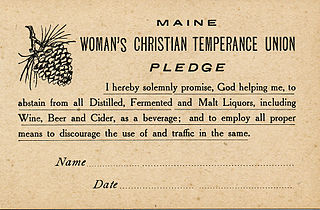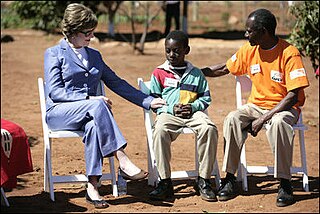
Chastity, also known as purity, is a virtue related to temperance. Someone who is chaste refrains either from sexual activity that is considered immoral or from any sexual activity, according to their state of life. In some contexts, for example when making a vow of chastity, chastity means celibacy.

Sexual intercourse is sexual activity involving the insertion and thrusting of the male penis inside the female vagina for sexual pleasure, reproduction, or both. This is also known as vaginal intercourse or vaginal sex. Sexual penetration has been known by humans since the dawn of time, and has been an instinctive form of sexual behaviour and psychology among humans. Other forms of penetrative sexual intercourse include anal sex, oral sex, fingering and penetration by use of a dildo, and vibrators. These activities involve physical intimacy between two or more people and are usually used among humans solely for physical or emotional pleasure. They can contribute to human bonding.

Sexual abstinence or sexual restraint is the practice of refraining from sexual activity for medical, psychological, legal, social, philosophical, moral, religious or other reasons. Sexual abstinence is distinct from asexuality, which is a sexual orientation where people feel little or no sexual attraction. Celibacy is sexual abstinence generally motivated by factors such as an individual's personal or religious beliefs. Sexual abstinence before marriage is required in some societies by social norms, or by law in some countries. It is a part of chastity.

The hymen is a thin piece of mucosal tissue that surrounds or partially covers the vaginal opening. A small percentage are born with hymens that are imperforate and completely obstruct the vaginal canal. It forms part of the vulva and is similar in structure to the vagina. The term comes straight from the Greek, for 'membrane'.

Virginity is the state of a person who has never engaged in sexual intercourse. The term virgin originally only referred to sexually inexperienced women, but has evolved to encompass a range of definitions, as found in traditional, modern and ethical concepts. Heterosexual individuals may or may not consider loss of virginity to occur only through penile-vaginal penetration, while people of other sexual orientations often include oral sex, anal sex, or manual sex in their definitions of losing one's virginity.

Abstinence pledges are commitments made by people, often though not always teenagers and young adults, to practice abstinence, usually in the case of practicing teetotalism with respect to abstaining from alcohol and other drugs, or chastity, with respect to abstaining from sexual intercourse until marriage; in the case of sexual abstinence, they are sometimes also known as purity pledges or virginity pledges. They are most common in the United States among Catholic and Evangelical Christian denominations, while others are nonsectarian.

Premarital sex is sexual activity which is practiced by people before they are married. Premarital sex is considered a sin by a number of religions and also considered a moral issue which is taboo in many cultures. Since the Sexual Revolution of the 1960s, it has become accepted by certain liberal movements, especially in Western countries. A 2014 Pew study on global morality found that premarital sex was considered particularly unacceptable in "Muslim Majority Countries", such as Malaysia, Jordan and Pakistan, each having over 90% disapproval, while people in Western European countries were the most accepting, with Spain, Germany, and France expressing less than 10% disapproval.
A purity ball is a formal dance event typically practiced by some conservative Christian groups in the United States. The events are attended by fathers and their teenage daughters in order to promote virginity until marriage. Typically, daughters who attend a purity ball make a virginity pledge to remain sexually abstinent until marriage. Fathers who attend a purity ball make a promise to protect their young daughters' "purity of mind, body, and soul." The balls are considered a part of purity culture.

Abstinence-only sex education is a form of sex education that teaches not having sex outside of marriage. It often excludes other types of sexual and reproductive health education, such as birth control and safe sex. In contrast, comprehensive sex education covers the use of birth control and sexual abstinence.
Adolescent sexuality is a stage of human development in which adolescents experience and explore sexual feelings. Interest in sexuality intensifies during the onset of puberty, and sexuality is often a vital aspect of teenagers' lives. Sexual interest may be expressed in a number of ways, such as flirting, kissing, masturbation, or having sex with a partner. Sexual interest among adolescents, as among adults, can vary greatly, and is influenced by cultural norms and mores, sex education, as well as comprehensive sexuality education provided, sexual orientation, and social controls such as age-of-consent laws.
The sexuality of US adolescents includes their feelings, behaviors and development, and the place adolescent sexuality has in American society, including the response of the government, educators, parents, and other interested groups.
The theology on the body is a broad term for Catholic teachings on the human body.
A born-again virgin is a person who, after having engaged in sexual intercourse, makes some type of commitment not to be sexually active again until marriage. The term has been used among evangelical and fundamentalist Christians, who place a strong emphasis on abstinence from premarital and extramarital relations.
In the United States, sex education is taught in two main forms: comprehensive sex education and abstinence-only as part of the Adolescent Family Life Act, or AFLA. Comprehensive sex education is also called abstinence-based, abstinence-plus, abstinence-plus-risk-reduction, and sexual risk reduction sex education. This approach covers abstinence as a choice option, but also informs adolescents about age of consent and the availability of contraception and techniques to avoid contraction of sexually transmitted infections. Every state within the U.S. has a mandated AIDS Education Program.
The Savior's Alliance for Lifting the Truth, commonly known as The SALT, is an evangelical Christian organization founded in 1996 by Christine O'Donnell, a Christian public relations and marketing consultant who ran for the United States Senate, hoping to represent the State of Delaware, in 2006, 2008, and 2010. O'Donnell served as president of The SALT from its founding and was still listed as its president as of July 2010. The organization sought to promote chastity in young people before marriage, preferring to avoid the use of the term sexual abstinence. The SALT was featured in the U.S. national media on many occasions during the 1990s, with O'Donnell appearing as its representative.

Making Chastity Sexy: The Rhetoric of Evangelical Abstinence Campaigns is a 2011 book by Christine Gardner, a professor at Wheaton College. In it, Gardner states that sexual abstinence teachings by evangelicals are currently "using sex to sell abstinence" by promising more satisfying sexual activity within marriage for those who abstain from premarital sex; she argues that this rhetoric reinforces selfish desires for gratification, sets people up for divorce and dissatisfaction with marriage, and simply adapts "secular forms for religious ends".
Christine Joy Gardner is an American communication scholar and journalist. She is an associate professor and the chair of the Department of Communication Arts at Gordon College.

The Purity Myth: How America's Obsession with Virginity Is Hurting Young Women (2009) is a book about virginity by feminist author Jessica Valenti. The book was first released onto hardback on March 24, 2009, through Seal Press. Valenti argues that there is a prevalent false notion promoted within the United States that a woman's worth is predicated upon whether or not she is sexually active, implying that the loss of virginity can negatively affect her. A DVD tie-in titled The Purity Myth: The Virginity Movement's War Against Women was released in 2011.
Uganda is one of the few Sub-Saharan African countries that has adopted abstinence-only sex education as an approach of sexual education that emphasizes abstinence from sexual intercourse until marriage as the only option. Abstinence-only sex education does not include joint curriculum covering other options including safe sex practices, family planning, and is espoused as the only sure way to avoid pregnancy and sexually transmitted infections. Uganda is commonly recognized as an exemplary case of lowering the rate of HIV prevalence. Prevalence figures may have also been distorted by the lack of treatment, meaning that the percentage of infected is decreased by disproportionately early deaths. Abstinence-only sex education has been implemented and supported for this cause to a large degree in Uganda, to some controversy. Critics have questioned its effectiveness in lowering HIV/AIDS transmission. They have also highlighted discrimination, gender inequality and social stigma as the outcomes of the program in Uganda.
Purity culture was a movement in the 1990s within Christianity which emphasized sexual abstinence.










